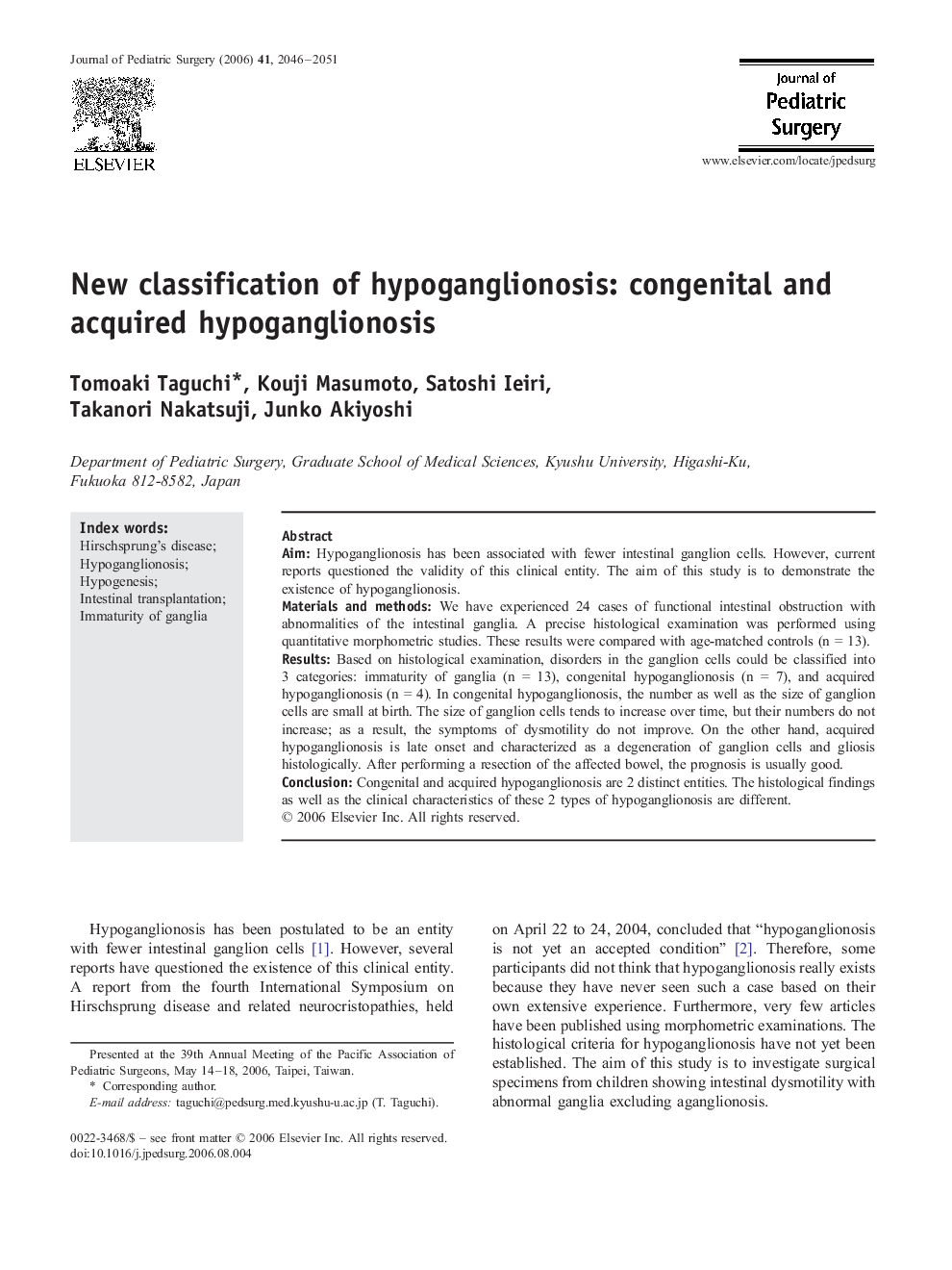| Article ID | Journal | Published Year | Pages | File Type |
|---|---|---|---|---|
| 4160470 | Journal of Pediatric Surgery | 2006 | 6 Pages |
AimHypoganglionosis has been associated with fewer intestinal ganglion cells. However, current reports questioned the validity of this clinical entity. The aim of this study is to demonstrate the existence of hypoganglionosis.Materials and methodsWe have experienced 24 cases of functional intestinal obstruction with abnormalities of the intestinal ganglia. A precise histological examination was performed using quantitative morphometric studies. These results were compared with age-matched controls (n = 13).ResultsBased on histological examination, disorders in the ganglion cells could be classified into 3 categories: immaturity of ganglia (n = 13), congenital hypoganglionosis (n = 7), and acquired hypoganglionosis (n = 4). In congenital hypoganglionosis, the number as well as the size of ganglion cells are small at birth. The size of ganglion cells tends to increase over time, but their numbers do not increase; as a result, the symptoms of dysmotility do not improve. On the other hand, acquired hypoganglionosis is late onset and characterized as a degeneration of ganglion cells and gliosis histologically. After performing a resection of the affected bowel, the prognosis is usually good.ConclusionCongenital and acquired hypoganglionosis are 2 distinct entities. The histological findings as well as the clinical characteristics of these 2 types of hypoganglionosis are different.
